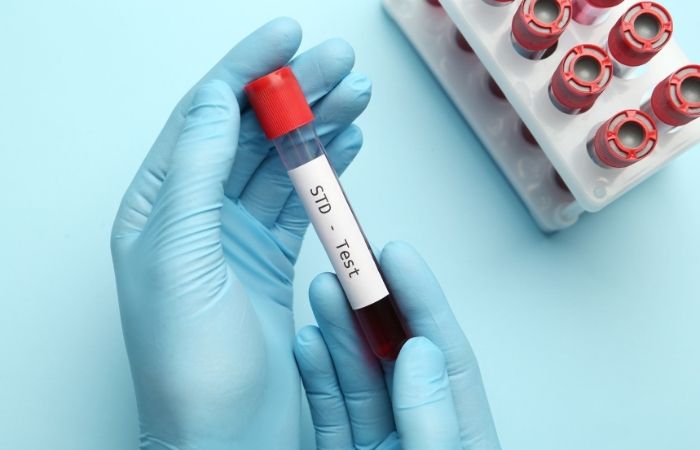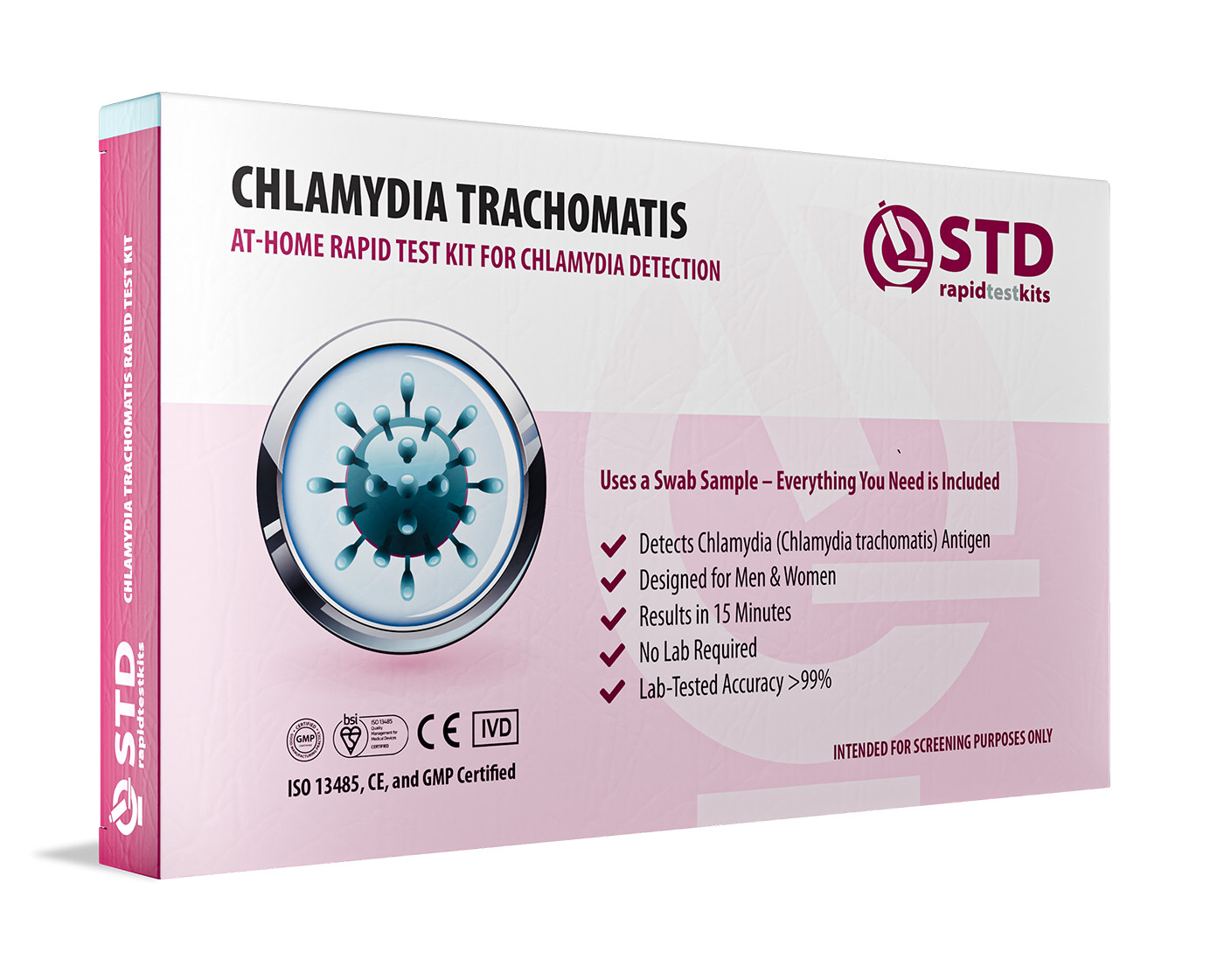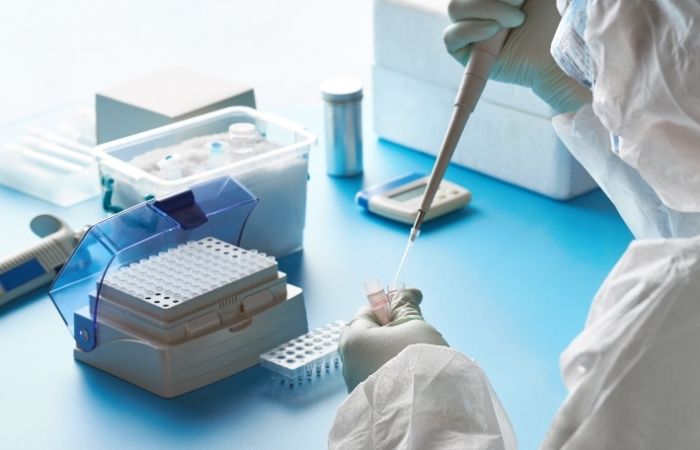How Chlamydia Tests Work, and Why They Can Be Confusing
Most modern chlamydia tests use a method called NAAT (nucleic acid amplification testing). These tests are super sensitive; they look for traces of chlamydia DNA or RNA, not the live bacteria itself.
Here’s the catch: NAATs can’t tell if the DNA they’re detecting is alive or dead. That means if you test too soon after antibiotics, the test might pick up the corpse of the bacteria long after the infection is gone.
According to the CDC and studies published in peer-reviewed journals, residual DNA can remain in your system up to 21 days after completing treatment.

People are also looking for... Did They Cheat, or Did I Just Get Chlamydia Again?
Top 3 Reasons Your Test Is Still Positive
- You Tested Too Soon: This is the most common reason for a confusing positive. If you took your antibiotics and tested within 3 weeks, your body might still be shedding dead chlamydia cells.
- You Got Reinfected: It happens more often than people think. If a partner wasn’t treated or got re-exposed themselves, you could’ve been infected again. That’s not a failed treatment. That’s a new exposure.
- You’re Experiencing Treatment Failure (Rare): Antibiotics like doxycycline are highly effective. But if you didn’t take the full course, vomited after a dose, or have antibiotic resistance (rare but possible), the infection might still be active.
Symptoms, timing, and partner history help distinguish which of these applies.
What a False Positive Really Means
A “false positive” doesn’t always mean the test is broken. It might mean:
- Contaminated sample: Rare, but possible in poorly handled lab tests
- Cross-reactivity: Less common with modern NAATs, but occasionally occurs
- Residual DNA: Your body still flushing out old bacterial material
NAATs are 97–99% accurate. But that still leaves room for confusion, especially in the early post-treatment window.
When Should You Retest After Chlamydia Treatment?
Timing matters more than anything. If you test too soon, you’re more likely to get a false positive, even if you feel totally fine.
Here’s what top sexual health experts and the CDC recommend:
- Wait at least 3 weeks after completing antibiotics before taking another test
- Retest at 3 months, even if you have no symptoms, to catch silent reinfection
- Test sooner only if symptoms return, or if you suspect a partner wasn’t treated
How Long Does Chlamydia DNA Stay in Your Body?
Residual chlamydia DNA can linger in your system for 2 to 3 weeks after treatment. This doesn't mean you're still contagious, but it does mean a test might show positive.
Here’s how it works:
- Chlamydia bacteria are killed by antibiotics, but their DNA fragments take time to flush out
- NAATs can detect extremely low levels of that dead genetic material
- Most people are cleared by day 21, but a small percentage may show traces even after that
Your body clears infections on its own schedule. That doesn’t mean your treatment didn’t work.
Check Your STD Status in Minutes
Test at Home with RemediumChlamydia Test Kit

 For Men & Women
For Men & Women Results in Minutes
Results in Minutes No Lab Needed
No Lab Needed Private & Discreet
Private & DiscreetOrder Now $33.99 $49.00
When It’s Time to Worry (and What to Ask Your Doctor)
Sometimes, a positive result really does mean you’re still infected. If you’re beyond the 3-week window and still testing positive, or if symptoms have returned, it’s time to follow up.
Ask your provider:
- What kind of test was used? (Most likely NAAT, but it helps to confirm)
- When did you last test? (To rule out testing too early)
- Could this be reinfection? (If a partner wasn’t treated or you resumed sex too soon)
- Should I be retreated? (Especially if symptoms are still present)
Don’t be afraid to ask for a second test or opinion, especially if you feel like you’re not being heard.
When Should You Retest After Chlamydia Treatment?
Timing matters more than anything. If you test too soon, you’re more likely to get a false positive, even if you feel totally fine.
Here’s what top sexual health experts and the CDC recommend:
- Wait at least 3 weeks after completing antibiotics before taking another test
- Retest at 3 months, even if you have no symptoms, to catch silent reinfection
- Test sooner only if symptoms return or if you suspect a partner wasn’t treated
Still confused? Consider ordering an at-home test kit to confirm results in private before jumping to conclusions.
How Long Does Chlamydia DNA Stay in Your Body?
Residual chlamydia DNA can linger in your system for 2 to 3 weeks after treatment. This doesn't mean you're still contagious, but it does mean a test might show positive.
Here’s how it works:
- Chlamydia bacteria are killed by antibiotics, but their DNA fragments take time to flush out
- NAATs can detect extremely low levels of that dead genetic material
- Most people are cleared by day 21, but a small percentage may show traces even after that
Your body clears infections on its own schedule. That doesn’t mean your treatment didn’t work.

People are also looking for... The Science Behind Retesting: How Long Should You Wait?
When It’s Time to Worry (and What to Ask Your Doctor)
Sometimes, a positive result really does mean you’re still infected. If you’re beyond the 3-week window and still testing positive, or if symptoms have returned, it’s time to follow up.
Ask your provider:
- What kind of test was used? (Most likely NAAT, but it helps to confirm.)
- When did you last test? (To rule out testing too early)
- Could this be reinfection? (If a partner wasn’t treated or you resumed sex too soon)
Don’t be afraid to ask for a second test or opinion, especially if you feel like you’re not being heard.
What About At-Home Tests, Are They Reliable After Treatment?
Yes, most at-home chlamydia tests, especially those that use lab-processed NAAT methods, are just as accurate as clinic tests. But the same rule applies: don’t test too early.
Look for tests that:
- Use NAAT technology (most lab-based at-home kits do)
- Come from FDA-cleared providers like STD Rapid Test Kits
- Offer clear follow-up guidance if results are positive again
Check Your STD Status in Minutes
Test at Home with Remedium10-in-1 STD Test Kit

 For Women
For Women Results in Minutes
Results in Minutes No Lab Needed
No Lab Needed Private & Discreet
Private & DiscreetOrder Now $189.00 $490.00
For all 10 tests
Window Periods: Timing Is Everything
One of the most confusing parts of STD testing is the infamous window period, the time after exposure when an infection is too new to be detected. That’s why a negative result right after risky sex doesn’t always mean you’re in the clear.
- Chlamydia and gonorrhea: Usually detectable 1–5 days after exposure, but repeat testing at 2 weeks is often needed to confirm.
- HIV: Early antibodies may take 3–6 weeks to show up; 4th-generation tests detect p24 antigen even earlier (around 2 weeks).
- Syphilis: May require up to 12 weeks for antibodies to appear, and some people don’t know they were infected until much later.
If your timing was off and symptoms arise later, it doesn’t mean your test was wrong; it means it was too early. When in doubt, retest at the recommended intervals. It’s not over until the full testing window has closed.
When Anxiety Echoes Symptoms
It’s common to obsess over minor sensations, like tingles, itches, and mild discharge, after testing, especially if you're worried or prone to health anxiety. But don’t let anxiety masquerade as symptoms.
- Nerve sensitivity: Anxiety heightens bodily awareness, so normal feelings can feel abnormal.
- Nocebo effect: Expecting symptoms can cause you to misinterpret ordinary sensations as signs of infection.
- Body-checking: Constantly monitoring your genitals or throat can lead to imaginary symptoms that feel real.
Try this: self-check once a day at a set time, then shift focus. If the sensations persist after the testing window has passed, consider re-evaluation. But if they fade, they’re probably anxiety talking, not pathology.
Persistent Symptoms? Here's When to Seek Expert Insight
Sometimes testing and timelines don’t match the story your body is telling. If symptoms linger, even after repeat negatives, or if symptoms recur, it’s time to dig deeper.
- Repeat symptoms: If you've tested negative but still have discharge, pain, or sores, you may have a non-standard infection like mycoplasma, Ureaplasma, or bacterial vaginosis.
- Partner symptoms: If a partner still tests positive or is untreated, reinfection is likely.
- Complications: Untreated STIs can lead to pelvic inflammation, prostatitis, or herpes flare-ups that need distinct treatment paths.
At this point, retest, but broaden the panel. Ask for extragenital or swab tests, urinary markers, and possibly even culture-based screening. Needing multiple rounds of testing doesn’t mean something’s wrong with you; it means you're advocating for accurate care.
Pro tip: Bring all your charts, symptom dates, and partner contact tracing info to your appointment. Clear data + clear communication = better treatment and peace of mind.

People are also looking for... Grindr, Hookups, and a Rise in Syphilis: What You Should Know
FAQs
1. Can the results of an STD test be affected by antibiotics?
Indeed, results may be ambiguous or deceptive if testing is done too soon after beginning antibiotics.
2. After a week of treatment, is it typical to still test positive?
Indeed. It's premature. Prior to retesting, wait at least three weeks.
3. Is it possible for a test to identify chlamydia in a deceased person?
Indeed. Instead of detecting live bacteria, NAATs identify bacterial DNA.
4. How can I tell if the test is truly incorrect?
You might only be picking up leftover DNA if you test too soon, your partner has had treatment, and your symptoms have disappeared. To be sure, retest later.
5. Do I require an additional course of antibiotics?
Only in the event that treatment failure or reinfection is suspected. Ask your provider instead of self-medicating.
6. Is it possible to test positive again without experiencing any symptoms?
Indeed. Often asymptomatic but still present, chlamydia can reinfect silently.
7. How do I know the test is accurate?
Make use of a reliable lab-based NAAT test. Steer clear of insensitive over-the-counter tests.
8. What should I do if, after four weeks, my test results remain positive?
Consult a provider. They might prescribe a different antibiotic, conduct additional testing, and rule out reinfection.
9. Could the infection have never been eradicated?
Yes, but it's uncommon with the right care. particularly if medications were poorly absorbed or doses were missed.
10. If I feel okay, can I disregard the outcome?
No. Reproductive health can be silently harmed by chlamydia. If you continue to test positive, always get a second test or treatment.
Your Body Isn’t Broken, But You Deserve Clarity
Testing positive again after chlamydia treatment can feel like a slap in the face, especially if you followed every instruction. But it doesn’t always mean you’re still infected. It could be leftover DNA. It could be reinfection. And yes, it could be time to talk to your doctor.
Here’s what matters most:
- Timing your test properly, at least 3 weeks post-treatment
- Understanding what NAATs really detect
- Knowing when to push for retesting or second opinions
- Staying calm and informed before jumping to conclusions
Because sometimes it’s not about the infection; it’s about peace of mind.
Sources
1. Verywell Health – Understanding False Positive or False Negative STI Test Results
2. Verywell Health – The Window Period for STD Testing
3. CDC – Retesting After Treatment to Detect Repeat Infections
4. PMC – Optimal Time to Retest Patients With Urogenital Infections (Chlamydia, Gonorrhea)
5. Centers Urgent Care – How to Avoid False Negative STD Test Results (Timing & Testing Accuracy)










